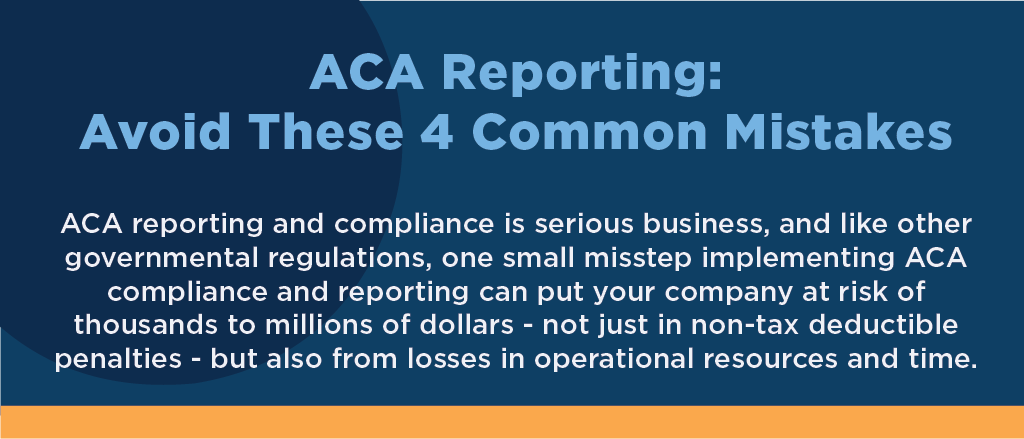
Your Employees’ Mental Health
Q: An employee says that the stress of the job is affecting thier mental health. How should we handle this?

Q: An employee says that the stress of the job is affecting thier mental health. How should we handle this?

To receive insights and a free risk assessment of your company’s ACA compliance practices with our HR industry experts call us at (844) 398-7800, or email us at getstarted@highflyerhr.com.

Can you see what’s coming for employee health care reporting? The Affordable Care Act (ACA) is burdensome and complex with changes to many different laws or sections of our tax code. With nearly 100 provisions since its enactment, it seems to continually impact employer responsibilities and reporting.
Determining if your company is an applicable large employer (ALE) is just one of the ACA requirements. An employer with more than 50 full-time (or an equivalent combination of full-time and part-time) employees is an ALE. An ALE must offer affordable health plans that provide at least a minimum level of coverage to their full-time employees (and their dependents), or possibly be subject to the employer shared responsibility penalty. Though no employer shared responsibility payments were assessed for 2014, employers must use their 2014 workforce information (e.g., number of employees, hours of service) to determine their criteria for 2015, since the number of employees is a calculated value of full-time and part-time employees over the last 12 months.
The ACA also amended the tax code, adding sections 6055 and 6056. ALEs are required to file information returns with the IRS and provide statements to their full-time employees about health insurance coverage offered by the employer.
| Section 6055 | Section 6056 | |
| Insurers and self-funded plans | Applicable large employers | |
| Enforce the individual mandate | Enforce the employer mandate | |
| Show all individuals who are covered | Show who has been offered coverage | |
| Form 1094 B transmittal to the IRS | Form 1094 C; ALE’s transmittal to the IRS | |
| Form 1095 B notice to the individual | Form 1095 C; ALE’s notice to the employee |
As you can see, it’s critical that all your workforce data is in one location, making it easy to track critical employee and dependent data needed for required ACA reporting:
Highflyer HR’s Human Capital Management (HCM) technology that helps you determine your ALE status and maximum waiting periods for medical enrollments, in addition to running applicable self-funded or fully insured reports. Highflyer HR also provides appropriate filing for companies that fall under the exception reporting for this year. And if you’re curious about potential penalties due to the non-affordability of offered plans, Highflyer HR can show you proactive estimates.
Highflyer HR makes adhering to ACA requirements easier and more efficient. With expert support from our staff, iSolved makes sure you have all of the necessary data collection, forms and procedures so you don’t lose sight of vital compliance issues.
Contact us at 844.398.7800 for more about Highflyer HR and health care reporting compliance.